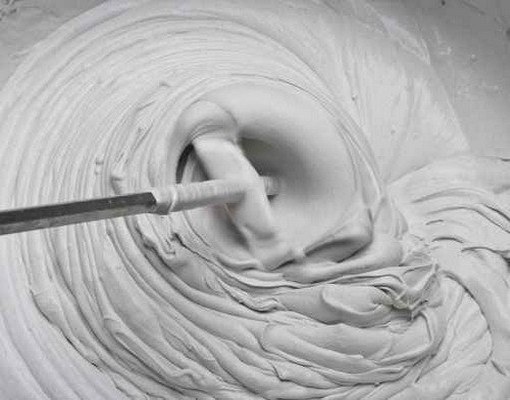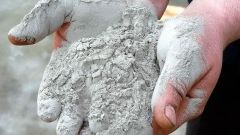Recipes of cement mortar
Before you begin cooking the mixture, you need to know the exact recipe for your purpose. The cement slurry used to fill the floors, to set Foundation, stucco walls, masonry brick. Each of these steps requires different ratios of ingredients of the solution, although in all cases use the same materials: the cement, sand and water, in some cases, add gravel or lime. In each case, required a particular brand of cement.
Grade of cement refers to the ability of a mixture to withstand a load in compression, the figure of the brand is measured in kilograms per centimeter squared.
For cement-sand floor screed above the required cement grade 400, silica sand and water. The proportion of cement and sand may be 1: 2.8 or 1 to 3, 10 kg of the cement requires 5 liters of water. It is also desirable to use a plasticizer, which facilitates the work with the mixture solution becomes strong, but supple and easy, and in a concrete screed subsequently does not appear cracked.
For the Foundation requires cement above 200, in addition to sand and water used gravel or crushed stone. The ideal ratio of cement, sand and gravel – 1:3:3 or 1:4:4.
It is very important that the solution is not extraneous impurities – soil, oils, herbs.
For plaster it is advisable to take sand, cement grade 100 or more, you can also use additives, such as lime or clay. The ratio of cement and sand is one to five, one part lime or clay. Water the mixture should be diluted to a liquid consistency.
For brick masonry bearing enough cement grade 25, for curtain walls and partitions – M10 with less strength. The ratio of sand and cement can be different from 1:3 to 1:6 depending on the brand and requirements for the solution. Water this requires 0.8 parts per one part of cement-sand mixture.
The technology of preparation of cement mortar
Manual manufacturing of cement is suitable for small volumes, for example, repair of urban apartments. It is very important to mix the cement and sand in dry form and then dilute them with water. Prepare the necessary tools and capacity: large quantities can be stirred with a shovel, a little with a spatula. Pour into a bowl, bucket or other container of sand and cement in the right proportions and blend them. Then you can add water, preferably in batches and not all at once, to not make the mortar too thin. Mix thoroughly, adding water until, until the solution become homogenous.
If you want to pour the Foundation, make a screed floor or to build load-bearing walls of brick, it is desirable to use the mixer. Place the unit on a level surface, turn on the mixer – only with a rotating drum it is possible to fill the ingredients. Fill materials should be according to the degree of reduction of their density: first, cement, then sand, then gravel, and recent flood water.


